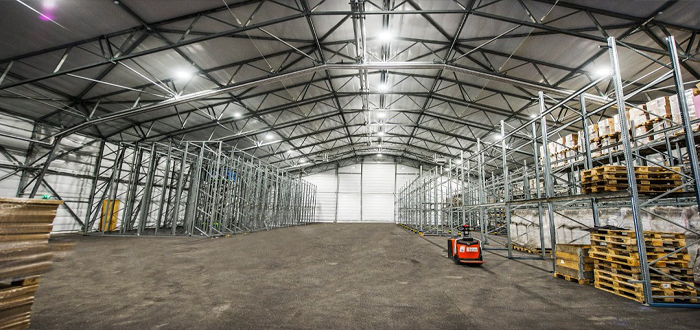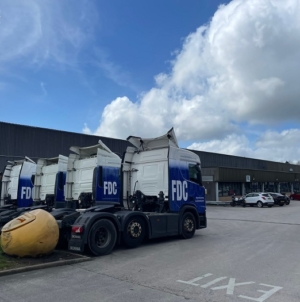-
Nulogy introduces new manufacturing quality and compliance capabilities with the strategic acquisition of AuditComply - 5 hours ago
-
POSTRACK LAUNCHES ASSET TRACKING BUSINESS IN THE UK TO TARGET LOGISTICS AND ROAD TRANSPORT SECTOR - 7 hours ago
-
SURECAM TO DISCUSS POTENTIAL AI VIDEO TELEMATICS PITFALLS AT FESTIVAL OF FLEET TECHNOLOGY - 1 day ago
-
Loadhog Announces Grand Opening of New Factory in Obernai, France - October 6, 2025
-
Prism eLogistics ‘Toasts the future’ with HMRC Duty Suspense Authorisation - October 2, 2025
-
BCMPA Members Quench Demand for Functional and Wellness Drinks - October 2, 2025
-
Combilift Re-Qualifies for Deloitte Best Managed Companies Award – 13 Years of Excellence - October 1, 2025
-
New Industrial Research Shows Demand for Bespoke Design Solutions to Combat Warehouse Bottlenecks in Peak - September 30, 2025
-
Launch of new brand “AntOn by Jungheinrich” - September 30, 2025
-
Combilift’s 100,000th Forklift on a European Tour: Enter to Win & Support a Life-Changing Cause! - September 30, 2025
The continuing growth of online shopping drives demand for new adaptable warehousing
Over the past decade online shopping has escalated at a phenomenal rate in the UK resulting in a demand for warehouse space which has nearly doubled.
Between 2007 and March 2018, around 235 million sq ft of warehouse space was leased or purchased across the United Kingdom which is equivalent to more than 3,000 Wembley Stadiums. According to CBRE about 60% of this warehousing space is used by retailers, feeding the demand of online shopping.
According to John Munnelly, Head of Operations at John Lewis: “Logistics is becoming the new retail”. 65% of activity in logistics is retail driven. A greater shift towards online business means a greater demand and competition for cost effective 3PL storage space so companies can adapt to eCommerce demands and the demands of their customers.
Amazon took a quarter of available UK logistics space in 2016 and the key takeaway from this is that businesses are going to need a lot more warehouse space for storing more product in the UK. They are also looking for the ability to be able to make structural alterations to accommodate future demands.
Flexibility, agility, capability and dependability are the key factors when looking forward at warehousing. How can warehousing cope with the demand and growth of online shopping? One answer is modular designed semi-permanent structures. Rubb Buildings a is UK manufacturer of these type of structures, and the company has seen an increase in the demand for adaptable warehousing.
Rubb Buildings Ltd Managing Director Ian Hindmoor commented “Feedback from our customers suggests that they are planning for the future, to be able to maintain the flow of their production and fulfil the demand from their customers. Rubb storage facilities provide an alternative and sustainable solution to traditional storage warehouses. To keep up with this ever-changing environment a semi-permanent fabric structure helps save on costs and is able to adapt to the changing requirements of the end user.”
Flexible warehouse space provides businesses with many unique advantages. The benefits of semi-permanent structures include fast design, manufacture and construction, with the flexibility to be adapted, modified, extended or relocated if needed. This allows clients to adapt quickly to change.
























